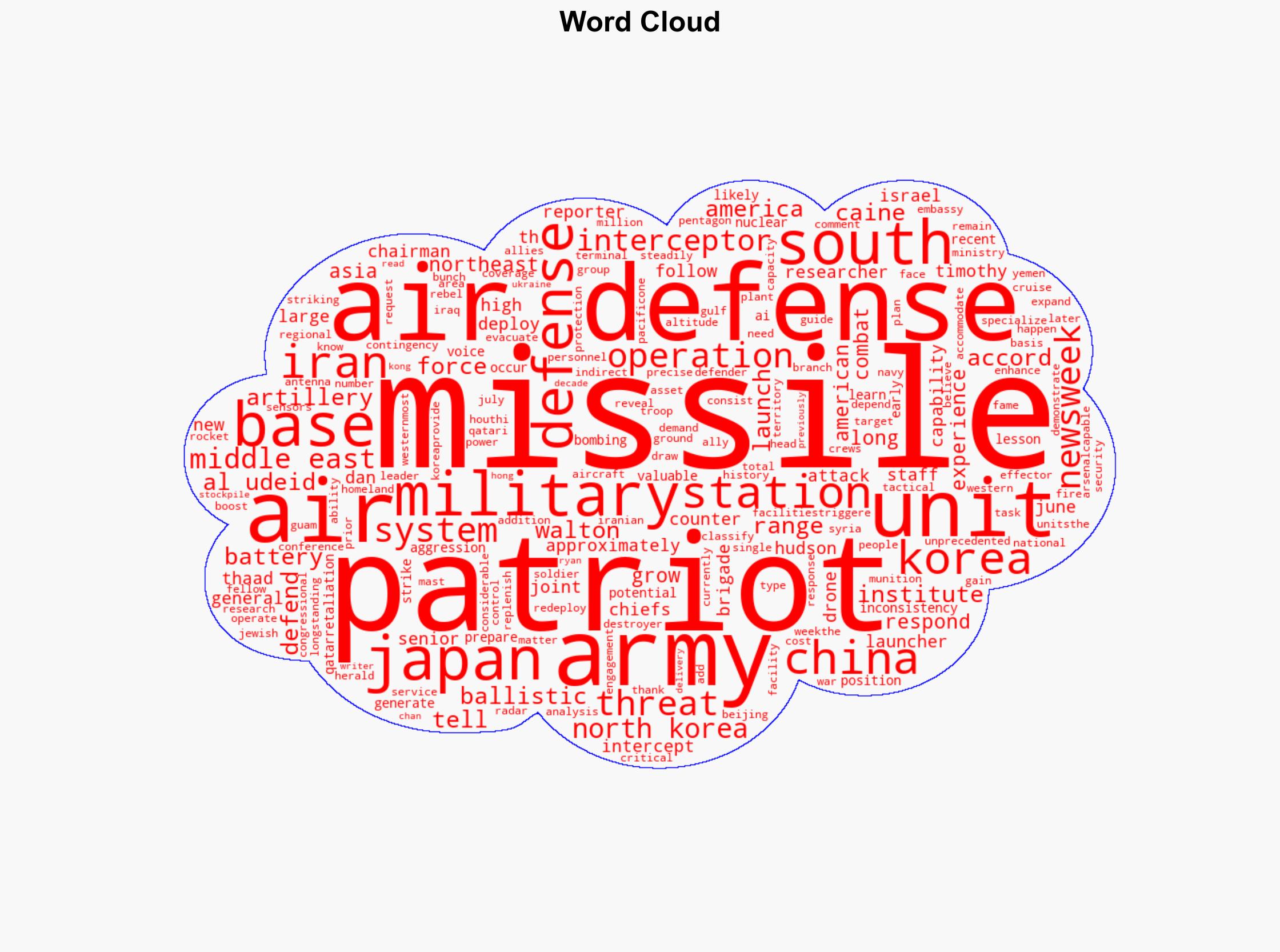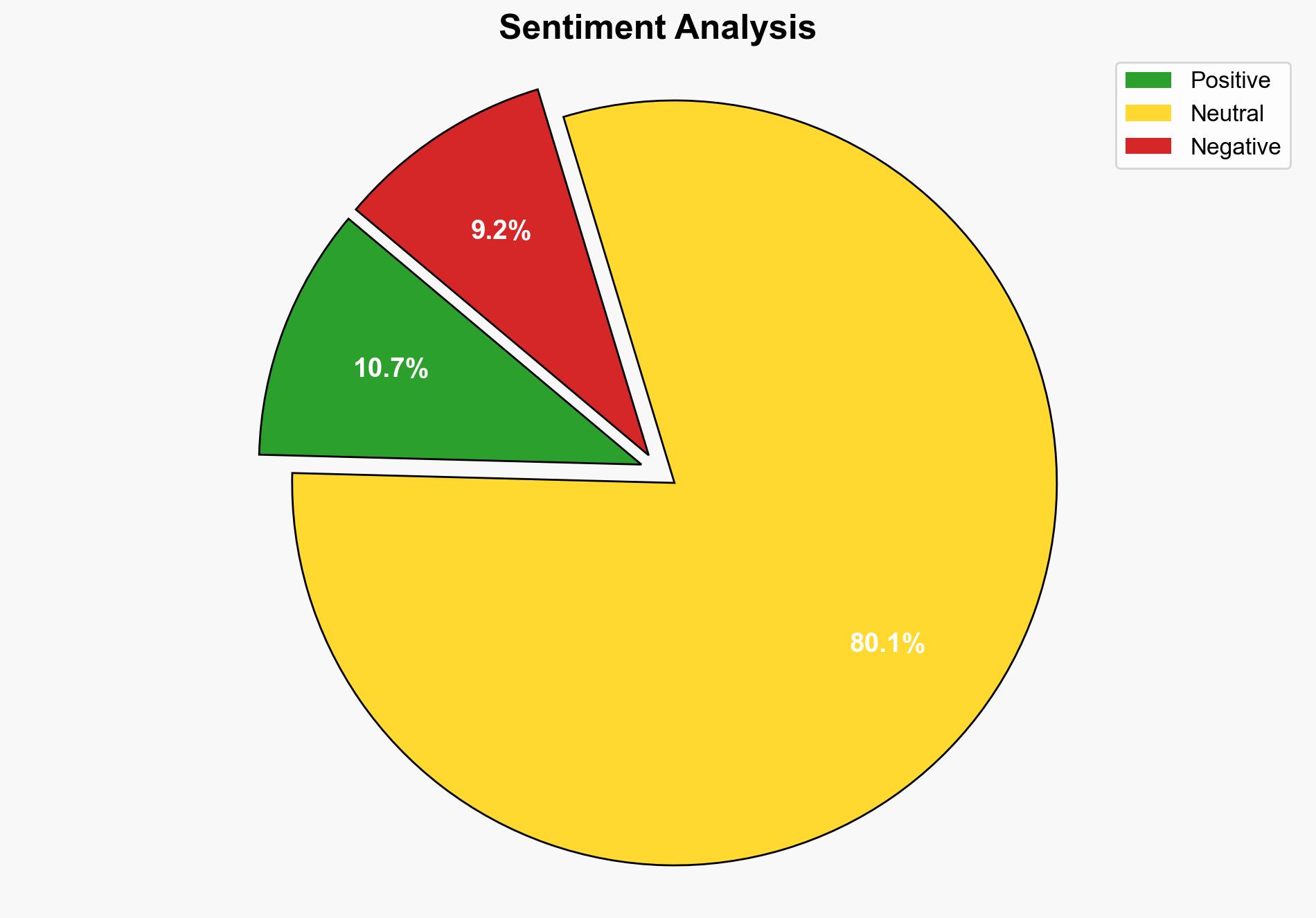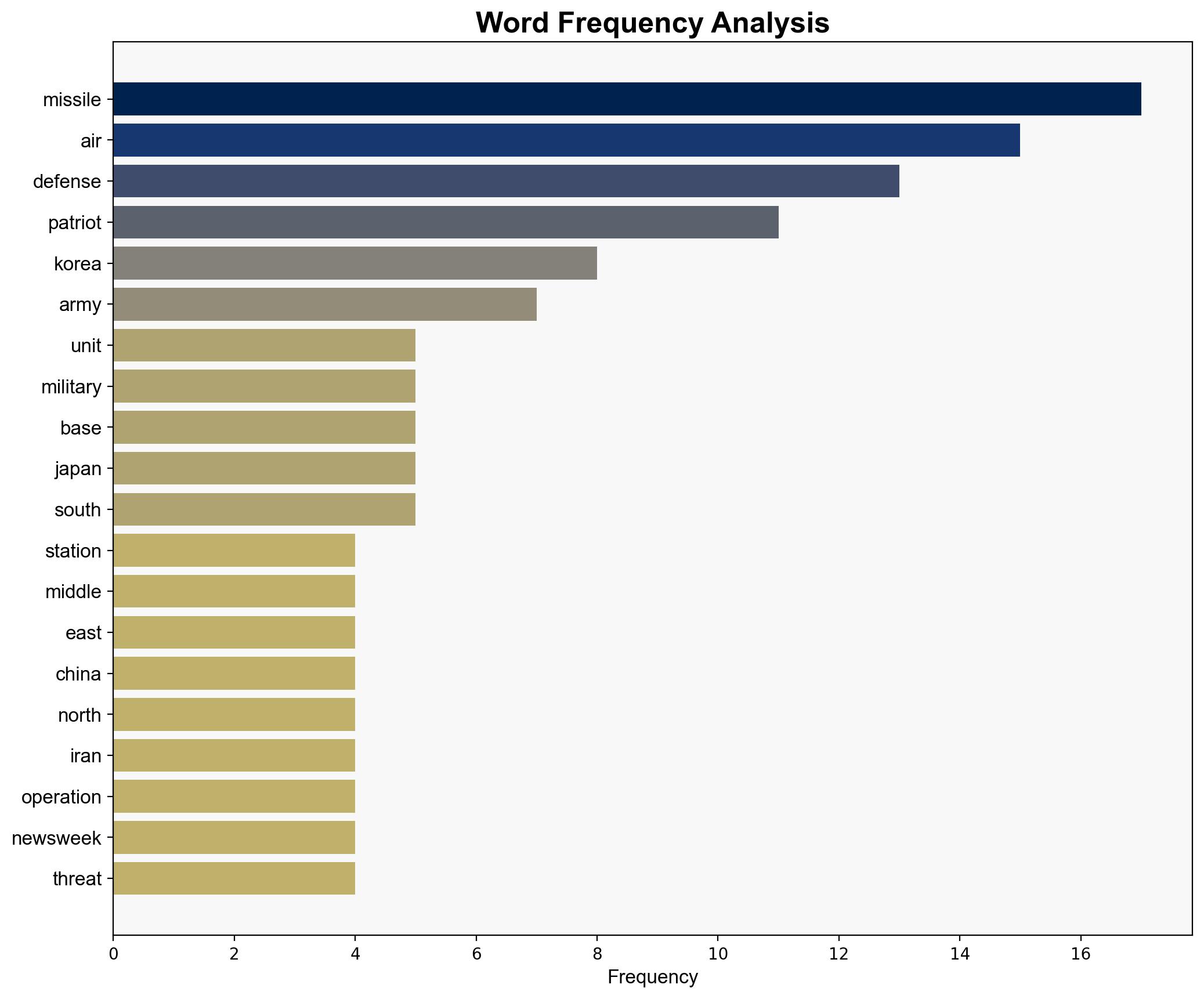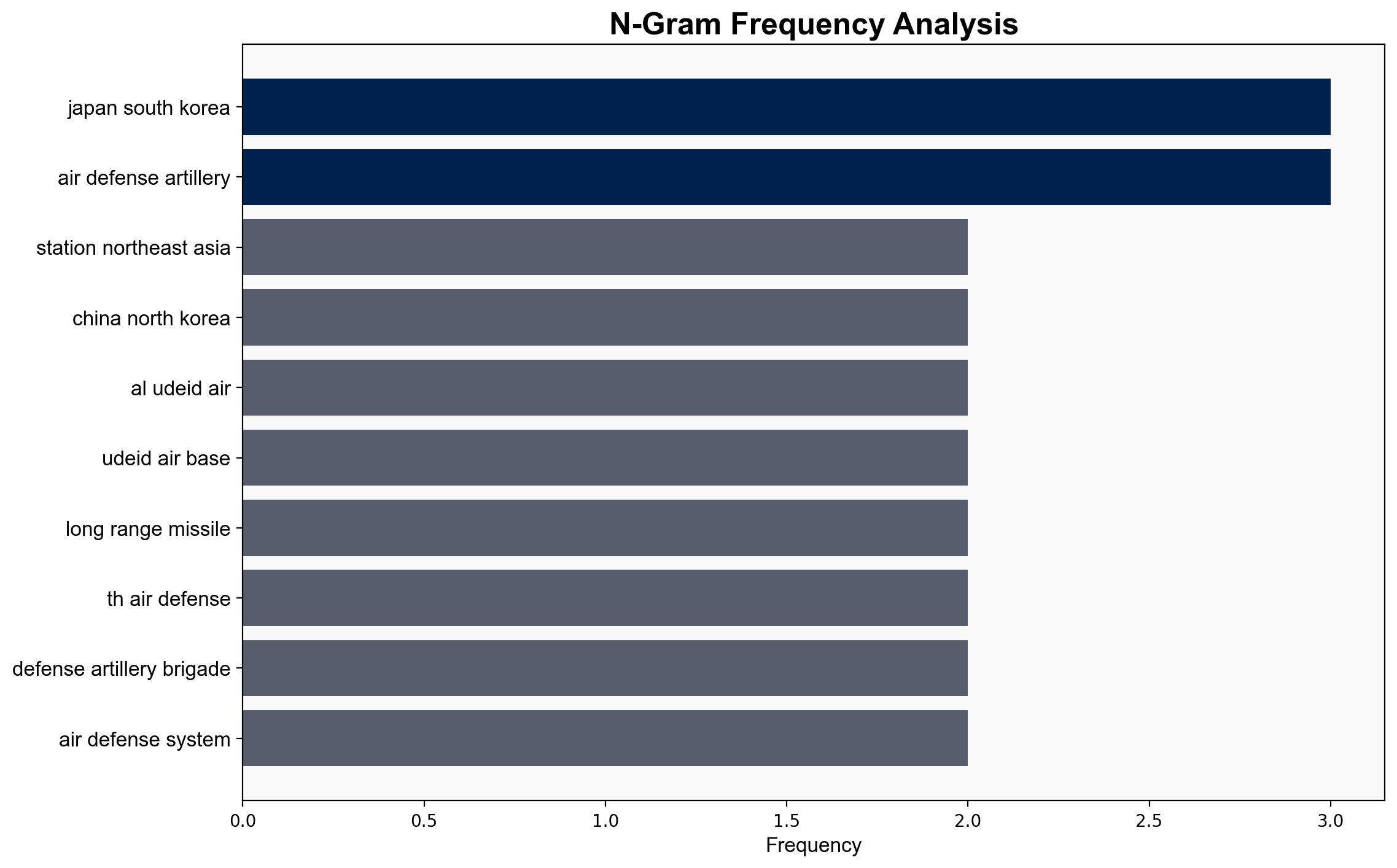How Iran Missiles Prepared US Patriot Units for Pacific War – Newsweek
Published on: 2025-07-25
Intelligence Report: How Iran Missiles Prepared US Patriot Units for Pacific War – Newsweek
1. BLUF (Bottom Line Up Front)
The strategic judgment is that the recent experiences of US Patriot units in the Middle East have enhanced their readiness for potential conflicts in the Pacific, particularly against threats from China and North Korea. This is supported by the redeployment of these units to Japan and South Korea. The most supported hypothesis is that the US is strategically positioning its air defense capabilities in response to growing missile threats in Northeast Asia. Confidence level: High. Recommended action: Continue strengthening air defense systems in the Pacific while engaging in diplomatic efforts to mitigate regional tensions.
2. Competing Hypotheses
1. **Hypothesis A**: The redeployment of Patriot units to Japan and South Korea is primarily a strategic response to the increasing missile threat from China and North Korea, leveraging recent combat experience in the Middle East to enhance readiness.
2. **Hypothesis B**: The redeployment is a routine military exercise aimed at maintaining a balanced global presence and is not directly influenced by recent Middle Eastern engagements.
Structured Analytic Technique: **Analysis of Competing Hypotheses (ACH) 2.0** was applied. Hypothesis A is better supported due to the specific mention of lessons learned from Middle Eastern operations and the strategic importance of Northeast Asia in current US defense policy.
3. Key Assumptions and Red Flags
– **Assumptions**: It is assumed that the lessons learned from the Middle East are directly applicable to the Pacific context. There is also an assumption that the missile threat from China and North Korea is escalating.
– **Red Flags**: Lack of direct statements from the Pentagon or other official sources confirming the strategic intent behind the redeployment. Potential bias in interpreting military movements as purely strategic rather than routine.
– **Blind Spots**: The report does not address the potential diplomatic repercussions of increased military presence in Northeast Asia.
4. Implications and Strategic Risks
– **Patterns**: Increased militarization in Northeast Asia could lead to an arms race, escalating tensions with China and North Korea.
– **Cascading Threats**: Potential cyber threats targeting air defense systems as a form of asymmetric warfare.
– **Geopolitical Risks**: Heightened military presence may strain US-China relations and impact regional alliances.
5. Recommendations and Outlook
- Enhance cybersecurity measures for air defense systems to prevent potential cyber-attacks.
- Engage in diplomatic dialogues with China and North Korea to reduce tensions and prevent escalation.
- Scenario Projections:
- **Best Case**: Successful deterrence of missile threats through enhanced defense readiness and diplomatic engagement.
- **Worst Case**: Escalation into military conflict due to misinterpretation of military movements.
- **Most Likely**: Continued strategic positioning with periodic diplomatic engagements to manage tensions.
6. Key Individuals and Entities
– Timothy Walton
– Dan Caine
7. Thematic Tags
national security threats, cybersecurity, counter-terrorism, regional focus





